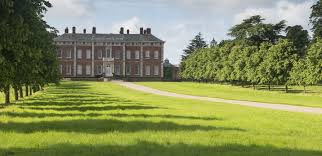The Role and Impact of the National Trust in the UK

Introduction
The National Trust, established in 1895, plays a crucial role in preserving the cultural and natural heritage of the United Kingdom. With over 500 sites across England, Wales, and Northern Ireland, this charity not only safeguards historic properties but also protects landscapes and wildlife. Its mission to conserve places of historic significance and outstanding natural beauty is more relevant than ever, especially in a world where conservation efforts face numerous challenges, from urban development to climate change.
Current Initiatives and Events
In 2023, the National Trust launched several initiatives aimed at enhancing visitor experience while ensuring sustainability. One notable project is the ‘Reimagining our Coast’ initiative, which focuses on not only preserving coastal areas but also enhancing biodiversity and promoting ecological resilience along the shores. With nearly 300 miles of coastline under its care, this initiative emphasizes the importance of coastal conservation.
Furthermore, the Trust has recently embarked on a campaign to attract a more diverse audience to its sites, recognising the need for inclusivity in heritage. Through community engagement programmes and events, the National Trust aims to connect with younger generations and explain the significance of preserving history and natural beauty.
Challenges and Community Involvement
Despite its accomplishments, the National Trust faces challenges, particularly in funding and maintenance of its properties. The COVID-19 pandemic severely impacted visitor numbers and revenue; however, with the phased reopening of sites, there are signs of recovery. The organisation has also been advocating for more government support to ensure the protection of its sites against rapid development and environmental change.
Community involvement remains vital for the Trust’s activities. Volunteer programmes offer opportunities for local people to engage with their heritage while providing essential support in conservation efforts. This grassroots involvement not only reinforces community bonds but also ensures that local histories and stories are preserved.
Conclusion
The National Trust holds a significant position in the UK as a guardian of the nation’s heritage. Its ongoing projects and initiatives exemplify the crucial interplay between conservation, community, and education. With climate change and urbanisation posing serious threats to historical sites, the Trust’s work will only become more vital in the years ahead. For readers, supporting the National Trust, whether through visits, donations, or volunteering, is an important step in safeguarding the rich tapestry of culture and history that defines the UK.








